The official language in the group is English, and our neighbours – the groups led by Dr. Gilles Vanwalleghem and Prof. Daan van Aalten – are also pretty much internationals, too. We are in an environment where you hear people speaking English in the corridors. If you like to experience an extraordinary work place (in a good way!) with an aim to increase your international competence for your future career, come and join us ;)

Yuya obtained BSc in Environmental Biology at the University of Reading, U.K., in 2007, with a thesis project on the environmental impact of the common pharmaceutical ibuprofen on the model organism Daphnia magna (he subsequently managed to publish the work in the journal Ecotoxicology!). It was around this time that his passion in life science started, and he moved to Denmark setting off on an entirely new journey exposing himself to the facinating world of Nanoscience at Interdisciplinary Nanoscience Center (iNANO), Aarhus University. He thus completed 5 years of the PhD programme in 2014 with a number of publications on the nanoparticle-protein interactions and how they are recognized by earthworm immunocytes as a model of innate immunity. Continuously supported by external funding, he has strived to develop his own scientific career as an independent postdoc researcher working on a zebrafish model for bionanoscience studies (2015-2019) and as a junior group leader diving into the emerging field of extracellular vesicles (2020-2022). Now with the prestigious group starting grant awarded from Novo Nordisk Foundation, he is establishing Extracellular Vesicle Biology Group / Laboratory for Bioinspired Nanomedicine (with co-affiliation to iNANO) to merge his expertise on extracellular vesicles and nanomedicine starring zebrafish as his favourite model organism.
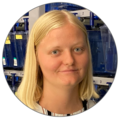
Rikke was the very first PhD student of the group funded by Novo Nordisk Foundation. She did her Master's degree here at the Department of Molecular Biology and Genetics with a thesis on milk extracellular vesicles. She worked on the basic biology of extracellular vesicles with a main focus on their cargo – microRNA, a type of RNA that can regulate gene expression and thus is said to drive cell-to-cell communication. She is experienced in live imaging of extracellular vesicles in zebrafish embryos and general molecular biology techniques, and assists training of new group members.

Nicklas is the second PhD student of the group funded by Novo Nordisk Foundation. He has a solid background in RNA biology, based on which he will tackle the big challenge of developing safe-by-design RNA origami nanostructures that can mimic extracellular vesicle's role in cell-to-cell communication. The project involves highly interdiciplinary collaborations spanning RNA nanotechnology, antiviral immunity, intravital imaging of different model organisms (zebrafish embryos and mice).

Camille is the proteomics expert in the group who will challenge the norm by studying extracellular vesicles from the cell's point of view – a Villum Experiment project. She will combine state-of-the-art genetic and proteomic approaches, in cells and zebrafish as a model system, to profile the interactions between extracellular vesicles and proteins forming the so-called "biomolecular corona".
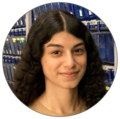
Beti was an intern student (BSc, Molecular Biology and Genetics) from Demiroglu Bilim University, Turkey. Following graduation from her home university, she visited here for an internship through the Erasmus+ programme to learn common and advanced techniques used for the zebrafish model in nanomedicine. In particular, she was trained in microinjection of various nanoparticles including those used in nucleic acid nanotechnology. She also created a transgenesis construct for expressing RNA origami in zebrafish. She has now returned to the group as an international MSc student formally admitted to the graduate programme here at Aarhus University. She continues her previous project on RNA origami with a new flavour to it.
MSc student (Aug 2023 – Mar 2024 & expected return in 2025); BSc student (Feb 2023 – June 2023)

Danna is a MSc student at the Department of Molecular Biology and Genetics. Her bachelor's thesis project was to study wound-induced expression of genes involved in endothelial biology and inflammation in a zebrafish model using a multivariate and network biology approach. She continues this work for a molecular biology project to look at changes in the miRNA cargo of endothelial cell-derived extracellular vesicles in order to correlate miRNA-mRNA profiles in tissue regeneration. She will come back to the lab for her Master's thesis to deepen the mechanistic understanding in the homeostatic role of extracellular vesicles. And she makes lovely drawings!
MSc student (Aug 2023 – Mar 2024 & expected return in 2025); BSc student (Feb 2023 – June 2023)
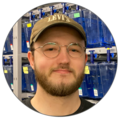
Kåre is a MSc student at the Department of Molecular Biology and Genetics. In his bachelor's thesis project, he designed a number of DNA constructs to study intra-/intercellular trafficking of extracellular RNA in cell cultures. His thesis work extended to a molecular biology project to test the constructs in zebrafish to visualize putative carriers of miRNA in the extracellular space. He will come back to the lab for his Master's thesis to further characterize the miRNA carriers using genetic approaches.
MSc student (expected return in 2025); BSc student (Feb 2023 – Aug 2023)
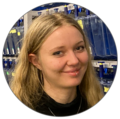
Agnes is a MSc student at Interdisciplinary Nanoscience Center (iNANO). Her bachelor's thesis project was co-supervised by Daniel Otzen (iNANO/MBG) and Gilles Vanwalleghem (MBG/DANDRITE) and was about visualization of alpha-synuclein aggregates, the synaptic protein involved in pathogenesis of Parkinson's disease. She used zebrafish embryos as a model system that allowed live imaging of exogenous alpha-synuclein with a particular focus on its propagation in the gut-brain axis. She will come back to the lab for her Master's thesis.
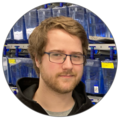
Ebbe is a MSc student at the Department of Molecular Biology and Genetics. In his bachelor's thesis project, he developed a number of very successful plasmid constructs that were transfected into zebrafish embryos for labelling and capturing of extracellular vesicles. He will come back to the lab for a molecular biology project to apply this method for studying neuron-derived extracellular vesicles.

Jonas is a MSc student at the Department of Molecular Biology and Genetics. His bachelor's thesis project was to study wound-induced changes in the protein cargo of extracellular vesicles using a zebrafish model. As a side project, he also designed a plasmid construct for transgenesis in zebrafish to study extracellular vesicles during tissue regeneration. Inspired by his great scientific curiosity, for his molecular biology project he is now entrusted with a collaboration work in which the zebrafish model is used to study kinetics of extracellular vesicle secretion and uptake.
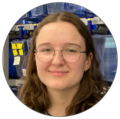
Marie is a visiting BSc student (Molecular Biology) from Bielefeld University, Germany. She is here for traineeship through the Erasmus+ programme to learn common techniques used in genetic engineering and extracellular vesicle biology as the study theme. She will be trained in plasmid construction, general handling of zebrafish embryos, microinjection, bioimaging, and academic presentation skills.
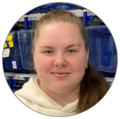
Margarita is a visiting BSc student (Molecular Biology) from Bielefeld University, Germany. She is here for traineeship through the Erasmus+ programme to learn common techniques used in genetic engineering and extracellular vesicle biology as the study theme. She will be trained in plasmid construction, general handling of zebrafish embryos, microinjection, bioimaging, and academic presentation skills.

Claus has been Yuya's mentor since 2015 when Yuya started his first DFF-funded postdoc research to develop a zebrafish model of innate immunity for bionanoscience. Apart from the two of them both being a zebrafish researcher and a cat-owner, their study themes barely overlap. Claus therefore supports the educational aspect of the team.
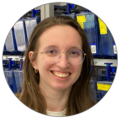
Eliza was an intern student (MSc, Molecular Biology) from the University of Zagreb, Croatia. Shortly after defending the MSc degree at her home university, she arrived here for an internship through the Erasmus+ programme to learn molecular biology techniques used in the lab. In her project, she made a number of plasmid constructs for engineering of functional extracellular vesicles into which mRNA with a specific motif can be selectively loaded, using zebrafish embryos as a model system.
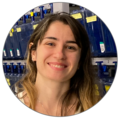
Marta was an intern student (MSc, Medical, Veterinary and Pharmaceutical Biotechnology) from the University of Florence, Italy. Seeking new opportunities abroad after an MSc degree in the biomedicine field, she carried out an exploratory project on the extracellular vesicle biology of neuroinflammation. The main focus of the training was to learn the techniques to study endogenously-labelled extracellular vesicles and to combine them with a zebrafish model of strokes and traumatic brain injuries.

Nilsu was a visiting BSc student (Molecular Biology and Genetics) from Bilkent University, Turkey. She was here for summer traineeship through the Erasmus+ programme to learn common techniques used for zebrafish xenograft models in cancer immunology. She was trained in general handling of zebrafish embryos, culturing of mammalian cancer cell lines, microinjection, bioimaging, and academic presentation skills.

Lisa was an Erasmus+ MSc student visiting from Leipzig University, Germany. She was also Yuya's first project student. Her stay was unfortunately hit by the second corona lockdown, but she managed to complete a molecular biology project on the validation of a zebrafish "TRAP" method for endothelial cell-specific translatomics. She learnt general handling of zebrafish embryos, nanoparticle injection, bioimaging, immunoprecipitation, in vitro transcription, whole-transcriptome amplification, quantitative real-time PCR, and PCR arrays. In return, her efforts on repeated experiments provided the foundation of Yuya's new approaches to isolation of polysomes and extracellular vesicles from zebrafish embryos. She is now doing a PhD at Leipzig University.